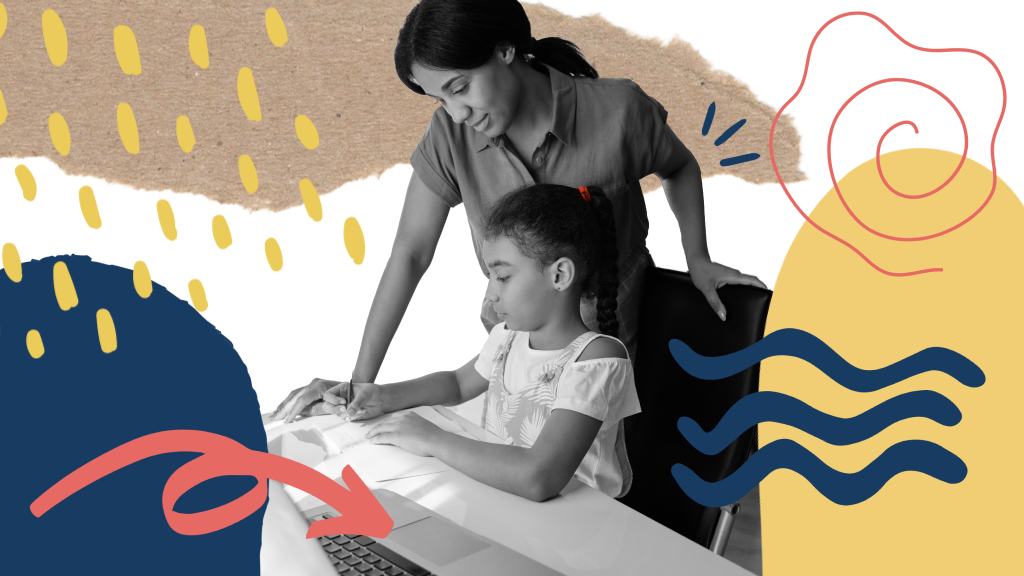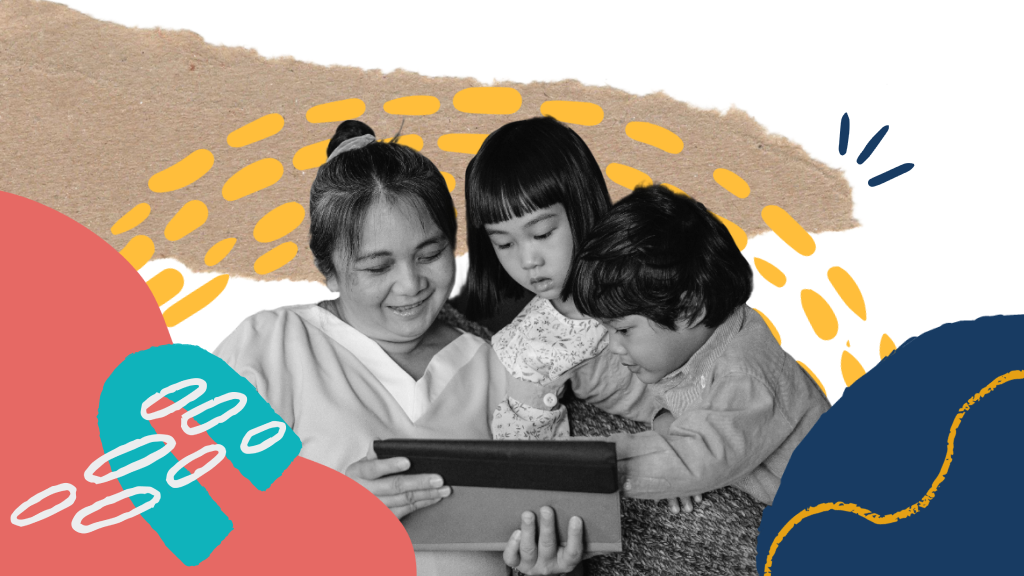The Superintendent’s Guide to Social Emotional Learning
25 Oct 2022

The adoption of social-emotional learning is on the rise, and for good reason. Research on social emotional learning (SEL) shows that it provides many benefits from improving academic performance to increasing self-awareness to encouraging positive relationship building and helping students thrive and succeed outside of school.
But what exactly is SEL, and why should you, as a school superintendent at the district level, pay attention to it?
According to the Collaborative for Academic, Social, and Emotional Learning (CASEL), SEL is “the process through which all young people and adults acquire and apply the knowledge, skills, and attitudes to develop healthy identities, manage emotions and achieve personal and collective goals, feel and show empathy for others, establish and maintain supportive relationships, and make responsible and caring decisions.”
Put simply, SEL is a crucial aspect of student development that should be part of every school curriculum.

As a superintendent, the importance of SEL is compounded by how the pandemic impacted students, educators, and families, particularly amid nationwide school closures. Consider how many educators witnessed the incredible resilience of their students as they worked through new school routines, separation from friends, and a slew of other situations.
In addition, today’s students are faced with more external pressures than ever before, including catching up academically, peer pressure, anxiety and depression, cyberbullying, body image issues, and adjusting to life post-pandemic. We also live in an ever-diversifying world—classrooms are now a place where students are exposed to people who come from different backgrounds with unique capabilities and different beliefs, cultures, and experiences.
These unique challenges and differences can be difficult to navigate without robust social-emotional skills. That’s why it’s essential to have SEL as part of your school system.
Superintendents at the district level are in a unique position to catalyze the benefits of SEL for both students and adults. This guide functions as a short manual to help you better understand social-emotional learning and how you can implement it effectively.
The Five Components of Social Emotional Learning
Understanding social emotional learning begins with familiarizing with its five pillars: self-awareness, self-management, social awareness, relationship skills, and responsible decision-making.
Here’s a quick overview of each of these components (we explain the five pillars in more detail in this piece).
Self-Awareness
The first component of SEL is about understanding oneself. It includes identifying and understanding one’s own thoughts, values, feelings, experiences, and emotions, and how these can influence actions.
Improving self-awareness and recognizing how one’s thoughts, feelings, preferences, and biases impact behavior can allow an individual to more effectively identify their strengths and weaknesses, and therefore, give them new insight into their decisions, interest, and actions. This will potentially improve a person’s self-management and decision-making, and it will serve as a foundation for fostering healthy relationships with others.
Self-Management
This core competency of SEL involves teaching students to regulate and control their thoughts, emotions, and behaviors so that they can respond positively and constructively to different situations.
For example, this can mean improving areas such as organizational skills, stress management, time management, personal and academic goal setting, self-discipline, and impulse control.
If self-awareness is the equivalent of getting to know oneself, self-management is about managing those emotions so that they allow one to navigate a diversity of situations and circumstances.
Social Awareness
Social awareness shifts the focus from the individual to other people, particularly those from marginalized backgrounds and cultural contexts.
This component is about improving skills like one’s ability to empathize with others, an awareness of other diverse individuals and groups of people, and the ability to take the perspective of those in different situations. It evolves the individual from a self-focused and self-sufficient person to a person motivated by patience, compassion, and genuine care for others; someone who understands that everyone has a different worldview and appreciates other people’s perspectives.
In your role as a superintendent, you have to keep in mind that developing social awareness requires social emotional learning that is culturally responsive.
Relationship Skills
Building on social awareness, the relationship skills competency involves teaching students to build positive, healthy, and mutually rewarding connections with others, including those who may act, look, or behave differently than they do. The relationship-building competency also allows students to effectively deal with conflict and work with others toward a common goal.
While social skills like these can be inculcated through pre-planned and concerted curricula, it’s even better to leverage teachable moments in the classroom to help students develop their relationship skills. SEL makes it easier for educators to undertake the latter.
Responsible Decision-Making
Finally, responsible decision-making is the ability to make positive and constructive choices based on a combination of social and individual factors such as social norms, personal and academic goals, safety concerns, and ethical standards.
Responsible decision-making is about the student understanding good and bad decisions, as well as recognizing that these decisions have an impact on the people surrounding them. This competency brings the process of SEL into full circle, starting from an awareness of oneself and culminating with an awareness of the consequences of one’s decisions.
Armed with your knowledge of these five core competencies, it’s time to look at the different ways you can start supporting SEL.
How Superintendents Can Support Social-Emotional Learning
As a superintendent at the district level, you can play a critical role in fostering the beneficial outcomes of social-emotional learning for students and adults. You are in a position to cultivate positive school cultures within your district, and ensuring opportunities for SEL is a crucial part of that work.
The following are some of the ways in which you can support students’ social-emotional learning.
1. Make Your Commitment to SEL Explicit
The first, and arguably most important, steps to fostering the teaching of SEL is to draw serious attention and commitment to it.
One thing you may want to ask yourself is if you have embedded SEL into your vision, mission, and policies. You want to try and include it in your annual budgetary and visionary plans, and make it clear why.
It’s only when you revisit your schools’ shared vision through a social-emotional lens and give SEL explicit attention that the schools and educators will begin adopting it into academic curricula and embedding it into their teaching practices. Granted, re-envisioning schools’ core beliefs and strategic priorities is a massive undertaking, but aligning them with the SEL competencies will help you improve learners’ educational experiences and outcomes.
2. Arrange SEL Training for Adults
Superintendents are increasingly focusing on supporting students’ SEL competencies, but to develop students’ social-emotional skills, educators also need to be supported.
In other words, you need to attend to the social-emotional development of educators and staff in addition to that of students. When thinking about funding SEL in your district, it’s equally crucial to have professional development funds and time allocated to supporting adult SEL skills.
Why is it important to do this?
The adults teaching SEL to students can only do so meaningfully if they are working on the SEL skills themselves. So, it’s not only good for them as adults, but critical as educators to be developing their SEL skills.
A study conducted by the Yale Center for Emotional Intelligence found that when teachers were required to teach SEL but didn’t develop their own skills, they worsened their students’ SEL skills. On the other hand, teachers who developed their own SEL skills not only improved their own wellbeing, but also improved their students’ learning outcomes.
You can also encourage school principals to involve teachers in SEL training, where they can discuss the impacts of social emotional learning and strategies to best implement SEL in the classroom in the long term. Implementing SEL training for your teachers and school principals can happen at the following levels:
- Individual level. This can involve creating opportunities for teachers and staff to establish supportive relationships and promote wellbeing, for example, through peer mentorship programs or wellness programs.
- Building level. At this level, you can continuously collaborate with educators to determine the SEL programs and support resources that are most helpful to them.
- Professional development level. This level entails providing educators with ongoing professional learning and SEL skill development, with a focus on transferring SEL skills to students.
3. Develop Your Own Social-Emotional Learning Skills
As someone in a position defined by leadership, you practice SEL skills every day—think about how you cultivate positive relationships with students, staff, parents, and the broader school community; how you balance all these various stakeholders while maintaining your personal life; or how you ensure that students succeed both academically and socially.
That said, you shouldn’t neglect to build on those skills. Look for professional development opportunities that support adult SEL. Such opportunities will better equip you to help students and educators, as well as help you prioritize your wellbeing.
Also, when leveling up your SEL development, remember to:
- Take the time to collaborate and connect with other leaders. Seek out opportunities to learn from other educators and leaders working on SEL.
- Model caring for yourself. Evaluate how you are attending to your own social and emotional wellbeing as a leader. You can’t help others build their social and emotional competencies if your own are lacking.
4. Make Data Your Biggest Reinforcement
Any new method of learning, particularly one as fundamental and profound as SEL, needs to be backed by data, otherwise, you may fail to see its value.
Make sure you’re leveraging your existing Instructional Leadership Team (ILT) for moving big social-change decisions. One responsibility of an ILT can be to perform a schoolwide SEL needs assessment, where the team gathers feedback on what’s working, what’s not, and any gaps that can be addressed.
Some of the data you’ll want to collect as part of your SEL efforts includes:
- Observational data collected by your teachers and administrators as they observe student behaviors and classroom practices
- Academic indicators, such as the results of formative and summative assessments
- Behavioral data, such as attendance and behavioral disruptions
- Self-perceptions, or how students perceive their SEL competence
- Teacher and staff-specific data on their comprehension of SEL and whether they have the tools and strategies needed to integrate it effectively into their daily classroom practices
This data will help you demonstrate the value of your SEL efforts and their effect on student outcomes. Moreover, data-driven SEL curricula will allow you to improve continuously as you better align your results with your goals. Just ensure that all stakeholders have access to the data to foster collaboration as you adapt from mistakes and iterate your strategy for successful SEL.
5. Harness Technological Innovation to Optimize SEL Implementation Across Schools
An unfortunate consequence of any practice seen as ‘social’ and ‘emotional’ is to distance it from everything connected to technology. The reality couldn’t be further from the truth.
Using technological tools, especially ones built specifically on the grounds of social-emotional learning and with an attempt to provide robust technical, academic, and culturally responsive curricula to parents, teachers, and students can be a powerful way to impress the long-term benefits of SEL into the students’ lives.
Take Lessonbee, for example. Our transformative online education platform provides technology solutions that drive measurable gains in SEL skill development in and out of school. It takes the guesswork out of SEL education, freeing educators to facilitate meaningful social-emotional learning activities and improve learners’ outcomes instead of searching for resources.
Top 7 SEL Jobs To Hire for As a District Leader
Implementing SEL programs requires the ability to make decisions across several functions, including planning and strategy, community building, training, operations, and reporting. Hiring for a set of SEL-focused roles can help take away the pressure of trying to handle all these functions on your own, allowing you to focus on the effective execution of your SEL efforts.
Here are seven common roles you may want to consider when it’s time to hire SEL-focused staff:
1. Director of Social-Emotional Learning
The director of SEL (also commonly known as the executive director of SEL or assistant superintendent) is typically the head of a district’s social-emotional learning initiatives. They lead the development, implementation, and evaluation of all SEL-related efforts, ensuring that all students develop social and emotional competencies and that all programs are aligned with district goals.
2. SEL Specialist / Coordinator
An SEL specialist or coordinator reports to the director of SEL, and their job is to support the effective implementation of a district’s SEL efforts. They help create and execute SEL initiatives, assisting district and school staff as they undertake SEL programs.
3. SEL Coach
An SEL coach helps schools implement their SEL programs in a way that aligns with the district’s plans and goals. They typically work directly with school leaders, educators, and staff to ensure that SEL is integrated effectively into classroom instruction and educators’ daily practices.
4. SEL Teacher
The main function of this student-facing, classroom management role is to teach SEL lessons. SEL teachers help students learn, practice, and demonstrate SEL skills. Where necessary, they also collaborate with stakeholders, including general education teachers, parents, and school administrators, to address students’ individual needs.
5. SEL Interventionist
Districts using a multi-tiered system of supports (MTSS)—an organizational framework used to ensure that all student needs are met—can benefit from incorporating SEL into the system since it reinforces students’ access to the support they need.
An SEL interventionist will help you connect the dots between MTSS and SEL, plus they may also play a role in monitoring student progress data, assisting with staff professional development, and bringing together schools, families, and community organizations.
6. SEL Data Strategist
If your SEL initiatives are data-driven (or if you want to base them on data), then you may need to hire an SEL data strategist. The strategist will oversee your district’s data collection, analysis, and reporting, assisting in breaking down the student-level data silos that are common in SEL programs.
7. SEL Instructional Specialist
An SEL instructional specialist is essentially an academic instructional coach, but with a focus on adult SEL.
They guide the creation and execution of SEL strategies, closely collaborating with teachers and administrative support staff to create effective SEL instruction, build supportive learning environments, and enhance adult SEL competencies. SEL instructional specialists may also provide resources and best practices for developing trauma-informed and resilience-oriented organizations.
The roles you hire for will depend on your district’s hiring needs and where you are in your SEL journey. That said, you shouldn’t overlook hiring for the more traditional roles such as school counselors and social workers who do SEL work, sometimes at the schoolwide level. Both counselors and social workers can play a critical role in fostering students’ social and emotional development by creating a climate in which the learners can achieve their potential.
Start Implementing a Winning SEL Strategy
There’s no denying that in today’s world, supporting students’ self-development must be a priority. It’s a pivotal time for superintendents at the district level to create an environment in which SEL thrives—one in which leaders can examine what’s working, what needs improvement, and how to best meet students’ evolving social and emotional needs.
It might, however, be a challenge to come up with competent SEL-focused learning content immediately in all your schools, especially if you want to improve student outcomes as soon as possible.
If this sounds like something you’re going through, then Lessonbee can help. We provide a broad range of age-appropriate resources and learning modules that help schools and districts advance their SEL-related instruction efficiently. Sign up for a free trial today.
Read More

Human Trafficking: Understanding the Impact and How to Help

A Guide to Social Emotional Learning for Homeschooling Parents

How to Help Your Child Deal With Online Harassment

Online Safety for Parents: How to Safeguard Your Child in the Digital World


